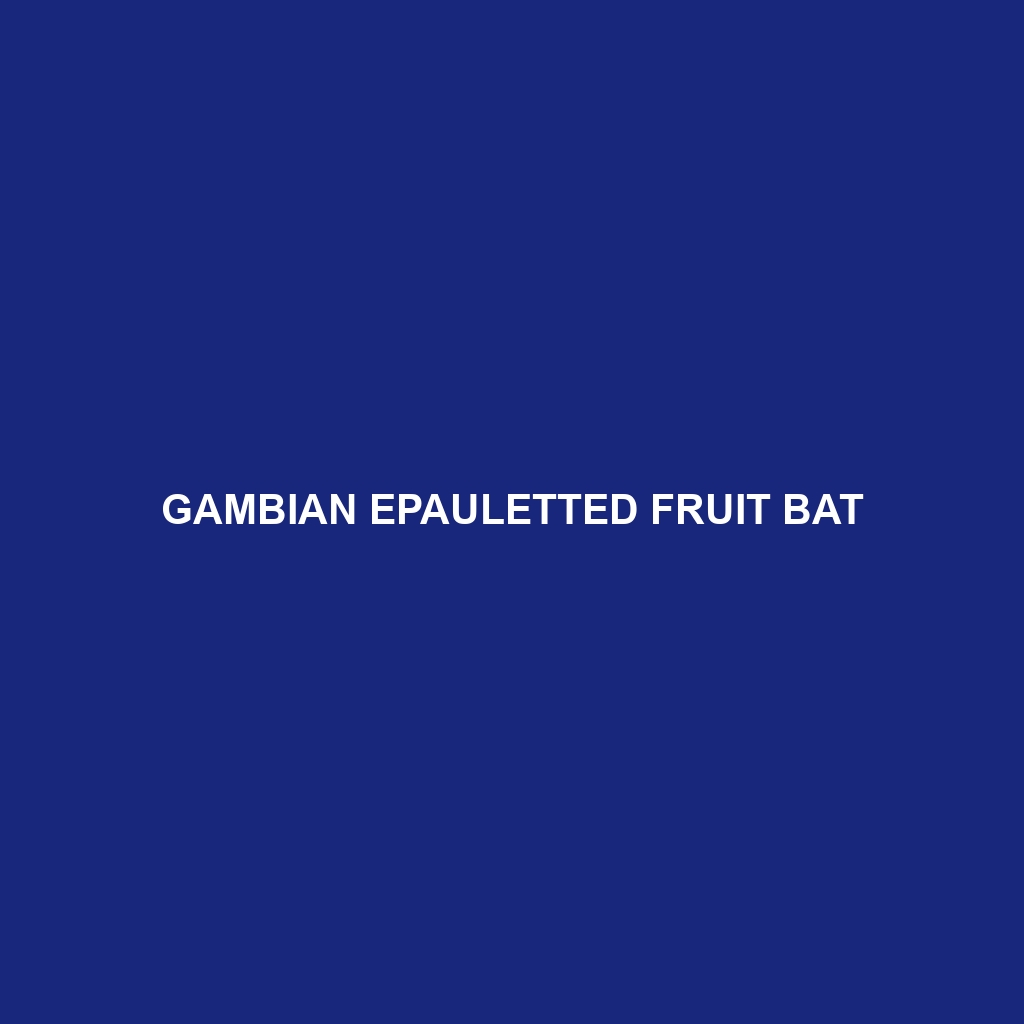Gambian Epauletted Fruit Bat
Common Name: Gambian Epauletted Fruit Bat
Scientific Name: Epomophorus gambianus
Habitat
The Gambian Epauletted Fruit Bat is primarily found in the tropical forests and woodlands of West Africa, particularly in countries such as Gambia, Senegal, Guinea, and parts of Ivory Coast. This species thrives in areas rich in fruit-bearing trees, which provide the necessary resources for their survival. They prefer humid environments and are often associated with riverine forests and the edges of savannas.
Physical Characteristics
This bat species typically measures between 10 to 15 centimeters in body length with a wingspan extending up to 30 centimeters. The fur is generally a mix of brown and gray tones, with distinctive yellow or white epaulettes on its shoulders that give the bat its name. These characteristics make the Gambian Epauletted Fruit Bat easily recognizable among other fruit bats.
Behavior
The Gambian Epauletted Fruit Bat is primarily nocturnal, emerging at dusk to forage for food. They exhibit social behavior, often roosting in groups within hollow trees or secluded caves. Their echolocation abilities enable them to navigate and forage effectively in the dense forest environment. The bats are known to communicate through a series of vocalizations, which can be heard during their evening activities.
Diet
As frugivores, Gambian Epauletted Fruit Bats primarily feed on a variety of tropical fruits, including figs, bananas, and other seasonal fruits. Their role in seed dispersal is crucial for maintaining the health of their ecosystem, as they help facilitate plant regeneration through their feeding habits. This mutual relationship highlights their importance in the broader context of forest ecology.
Reproduction
The breeding season for the Gambian Epauletted Fruit Bat typically occurs once a year, with females giving birth to a single pup after a gestation period of approximately 3 months. The mothers exhibit strong parental care, often roosting closely with their offspring until they are capable of flight and foraging independently. Young bats are usually weaned at about 2 months of age.
Conservation Status
The Gambian Epauletted Fruit Bat is currently classified as Vulnerable by the IUCN Red List. Threats to their populations include habitat destruction due to logging and agricultural expansion, as well as hunting pressures in certain regions. Conservation efforts are essential to protect this unique species and its habitat.
Interesting Facts
- The Gambian Epauletted Fruit Bat’s wings can reach up to three times their body length, allowing them to navigate through dense woods with agility.
- These bats play a significant role in pollinating flowers and dispersing seeds, making them integral to forest health.
- Compared to other fruit bat species, they have a relatively long lifespan, often living up to 15 years in the wild.
Role in Ecosystem
The Gambian Epauletted Fruit Bat serves as a crucial part of its ecosystem, significantly contributing to seed dispersal and pollination of various plant species. By feeding on fruits and nectar, they help maintain plant diversity and regenerate their habitats. Their interactions with other species highlight their importance in sustaining the ecological balance within their native environments.
